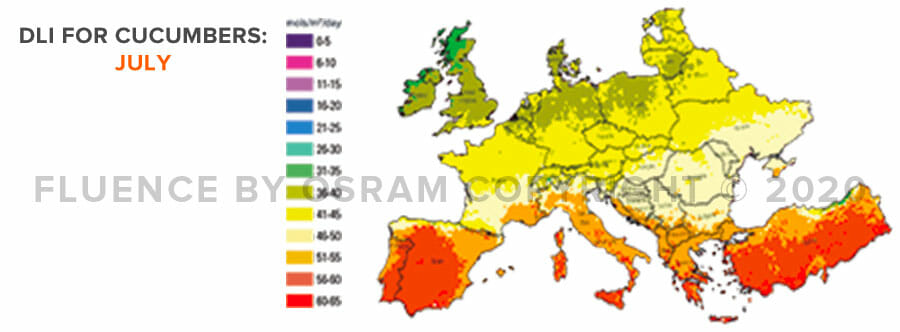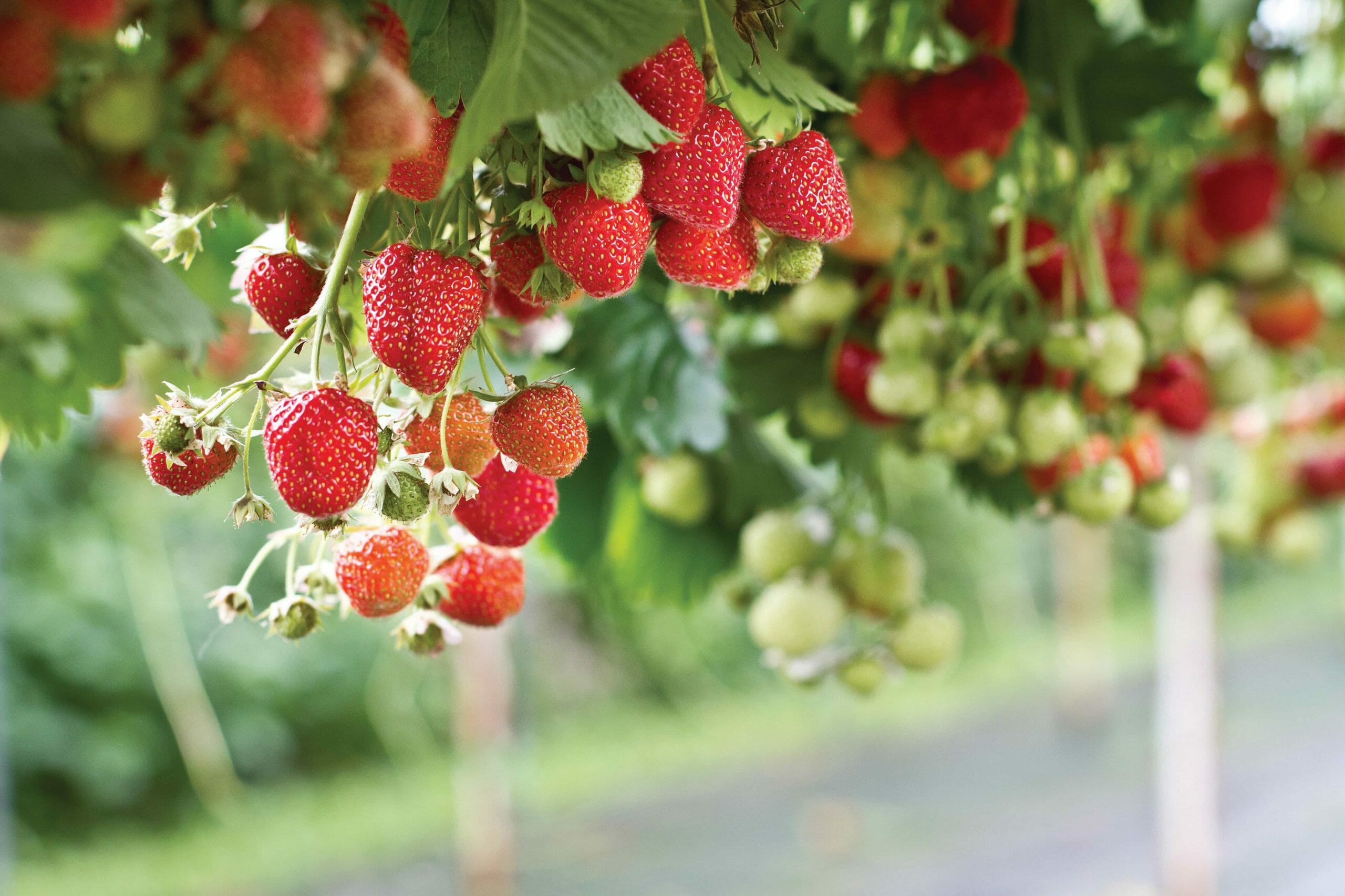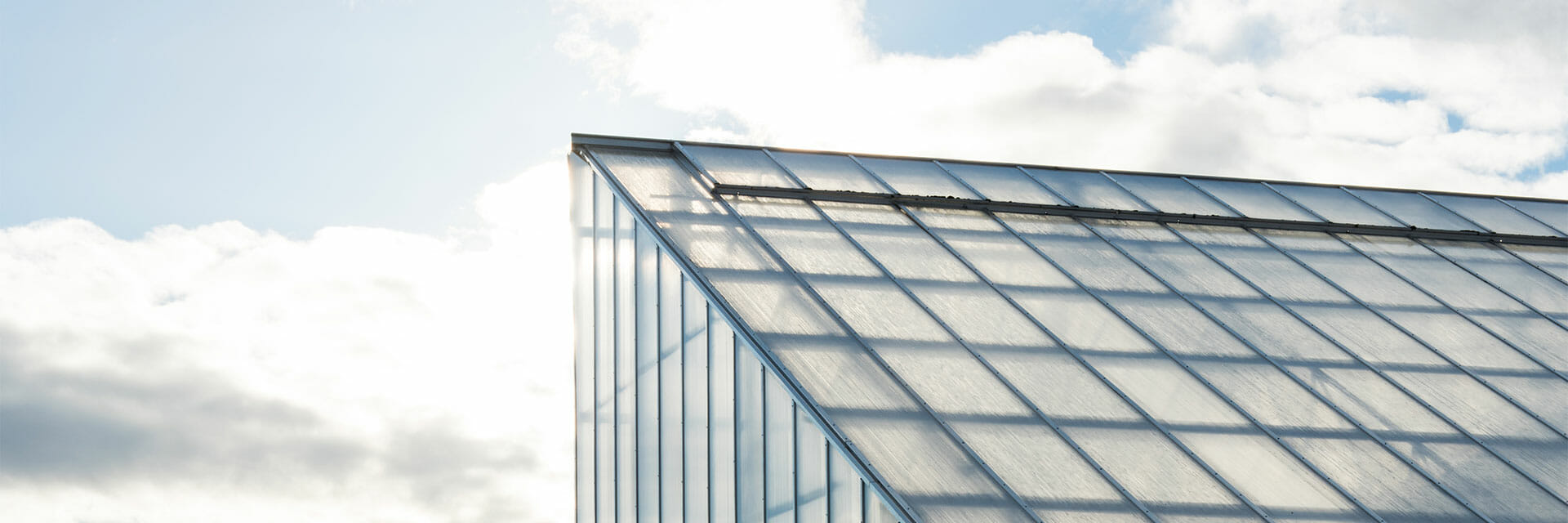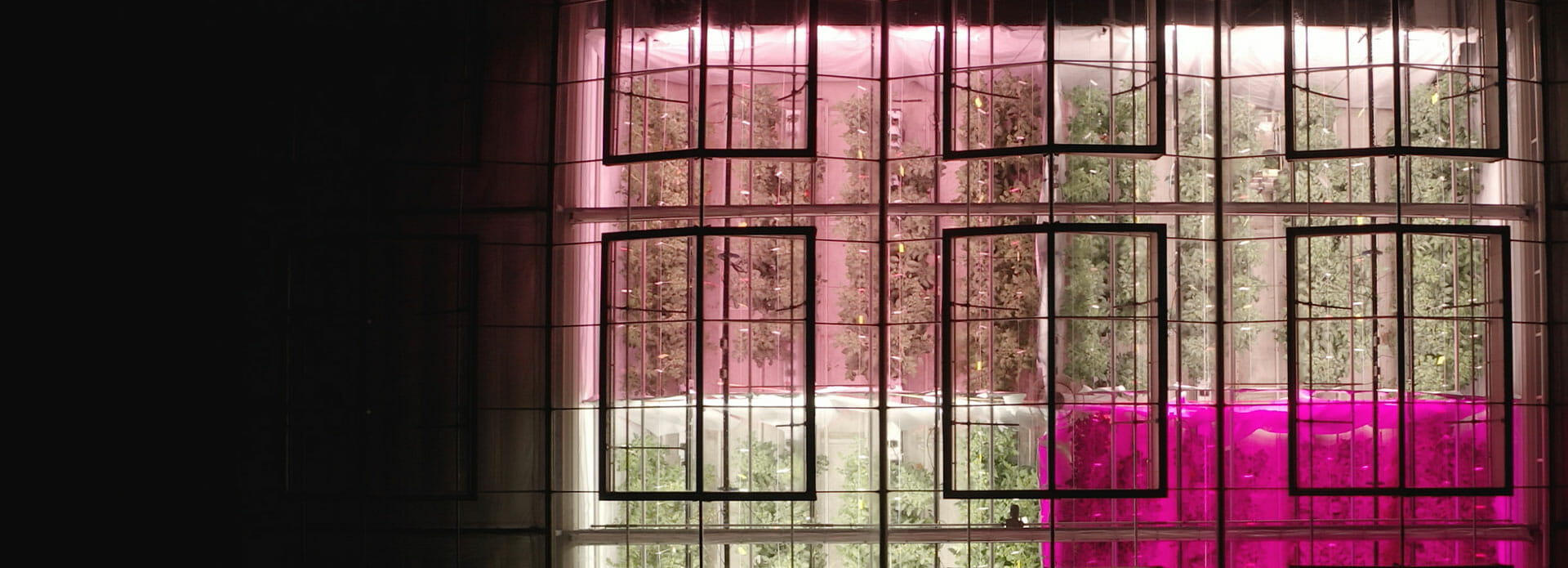Effects of different light qualities on greenhouse cucumber production in a high-wire system
In recent years, farmers have moved cucumber production from an umbrella systems to high-wire crop application. This evolution can be attributed to farmers moving vine crops to a controlled environment in high-wire crop greenhouse design. This transition has made way for technology to be applied to these crops to test the impact of supplemental lighting on plant production.
Cucumber cultivation is starting the transition to year-round growing with the rise of (supplemental) lighted winter cultivation. Fluence’s research into the optimal spectrum for cucumber, therefore, occurs at a key point. Broad spectrum LEDs have the potential to guarantee growers a successful crop that is at least equivalent to HPS, possibly with better yield and plant quality, where low blue spectrum can’t.
The Belgian and Dutch growers showed a great appreciation for Fluence’s commitment to lighting research, in which Fluence is clearly distinguished by the drive to advise growers with substantiated knowledge,”
– Jonas De Win, lead researcher at Proefstation.
To grow successfully in a high-wire crop system in winter, growers often install supplemental top lighting into their facilities to ensure plants are adequately lit during the relatively dark fall and winter months, thus preventing a decrease in yield. Historically, growers have used HPS lamps to fulfill their supplemental lighting needs. However, with advancements in LED technology, growers are migrating toward LEDs to leverage their operational savings and increase productivity. LED systems offer several advantages over HPS, including the ability to tailor a light spectrum to best suit a given plant species or production objective. As growers continue to implement LED technology, many are wondering if and how different light spectra could impact year-round cucumber production. How should a grower evaluate crop quality, efficacy and working conditions to identify the right light spectra for their growing environment?
Together, Fluence by OSRAM (Fluence) and Belgium-based Proefstation voor de Groenteteelt (Proefstation) tackled this question through an in-depth research trial exploring how different light spectra could affect the yield and quality of cucumber production.
Proefstation has conducted research for the past five decades on commercial crops grown in northern Europe. As lead researcher Jonas De Win describes, “we are the bridge between the growers and scientific research. We apply our knowledge to the practical application of commercial crop production. It is our mission to advance our community and guide them to grow smarter to ultimately become more profitable.”
The results show an increase in fruit yield driven by an increased fruit weight, a change in plant morphology and a faster fruit development timeline in cucumbers grown under broad spectra—or white light—as compared to purple light, or narrow-band spectra.
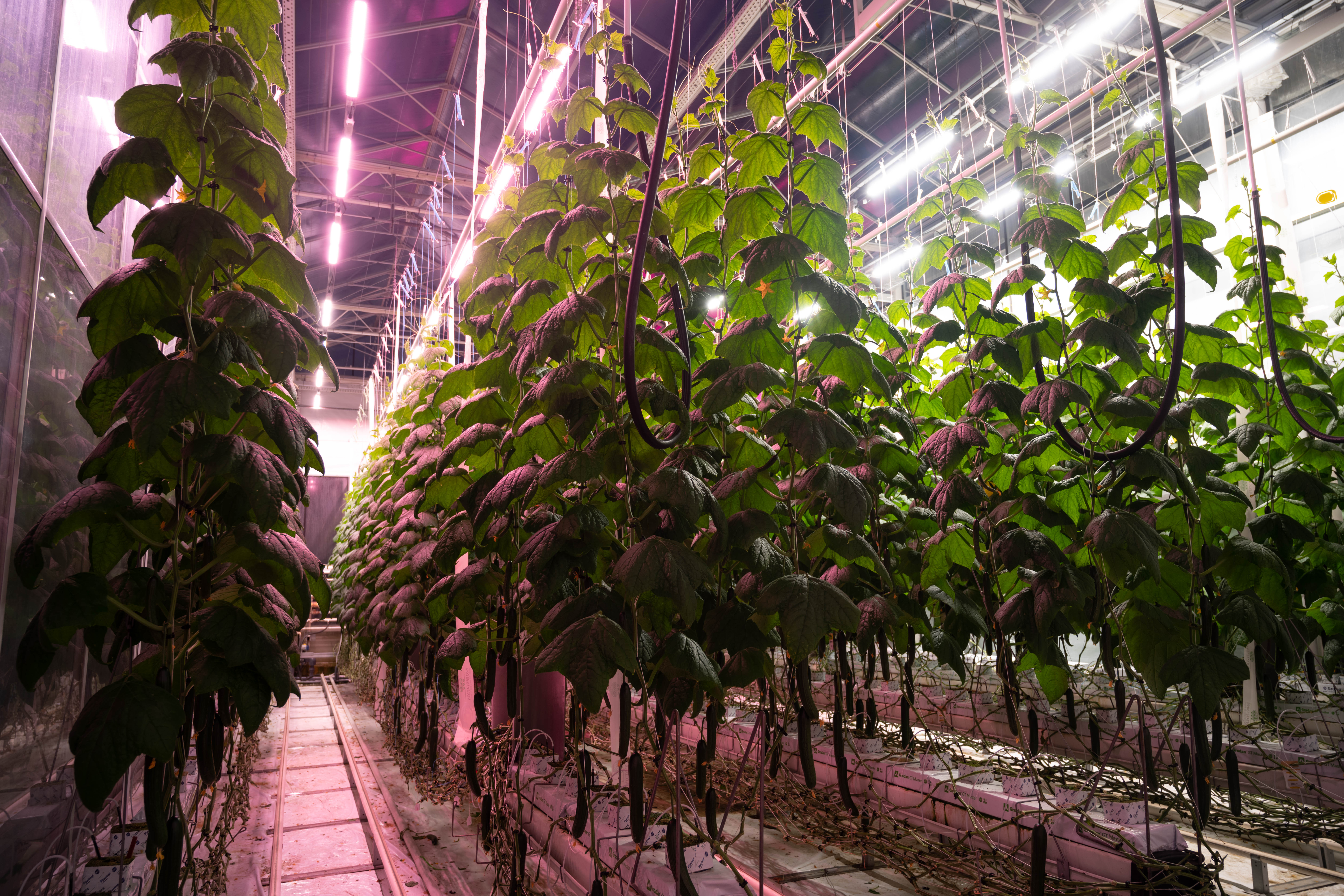
The Experiment
Which lighting strategy is right for my growing environment?
Results from the triple replicate study compare four different light qualities, ranging from broad-band to narrow-band spectra. The study was conducted in the 2019-2020 dark season with Fluence’s VYPR Series top light.
The experiment (planting date October 30, 2019) measured the yield and morphology of cucumber variety Cucumis sativus, ‘Hi Power’, a high yielding cultivar, suitable for high wire systems and year round production for maximum profit Figure 1 shows the different light qualities used within the four compartments of Proefstation’s greenhouse facility.
Spectra Charts (Figure 1)
The collaborative study with Proefstation was conducted with four spectral compositions, ranging from narrow-band to broad. The spectra are available in the Fluence VYPR toplight portfolio.

Greenhouse Experimental Design (Figure 2)

Environmental Conditions (Figure 3)
| Parameters | Value |
|---|---|
| Canopy level PPFD (µmol/m2/s | 310 |
| Photoperiod (h) | 18 |
| Target DLI (mol/m2.day) | 20-25 |
| Temperature (°C) | 22 (day) / 18 (night) |
| Relative humidity (%) | 78-85 |
| [CO2] Setpoint (ppm) | 700 |
| Rooting substrate | Rockwool |
| Nutrient solution | Liquid fertilizer mixture |
| pH | 5.5 |
| EC (µS) | 2.8-3.2 |
| Stem density | 2,5 /m2 |
DLI of Northern Belgium
Proefstation’s northern Belgium location was a critical consideration when conducting this research as the EU makes up one of the largest economics in greenhouse food production.
As such, we conducted the trial during the winter months with the least amount of light. The average daily light integral (DLI) of 2-7 mol·m-2·d-1 can be expected in northern Europe in the darkest months. By studying cucumber production under supplemental light in the dark season we are able to significantly increase our DLI for a target of 20-25.
To read more on DLI click here.

Results + Analysis
The study collected data on the following data points:
- Fruit yield
- Fruit weight
- Fruit development time
- Stem and internodal length
- Leaves per week creation
Yield
Researchers discovered that broad spectra, specifically broad R8, can produce up to 9% more fruit yield than under narrow-band (red/blue) spectra.
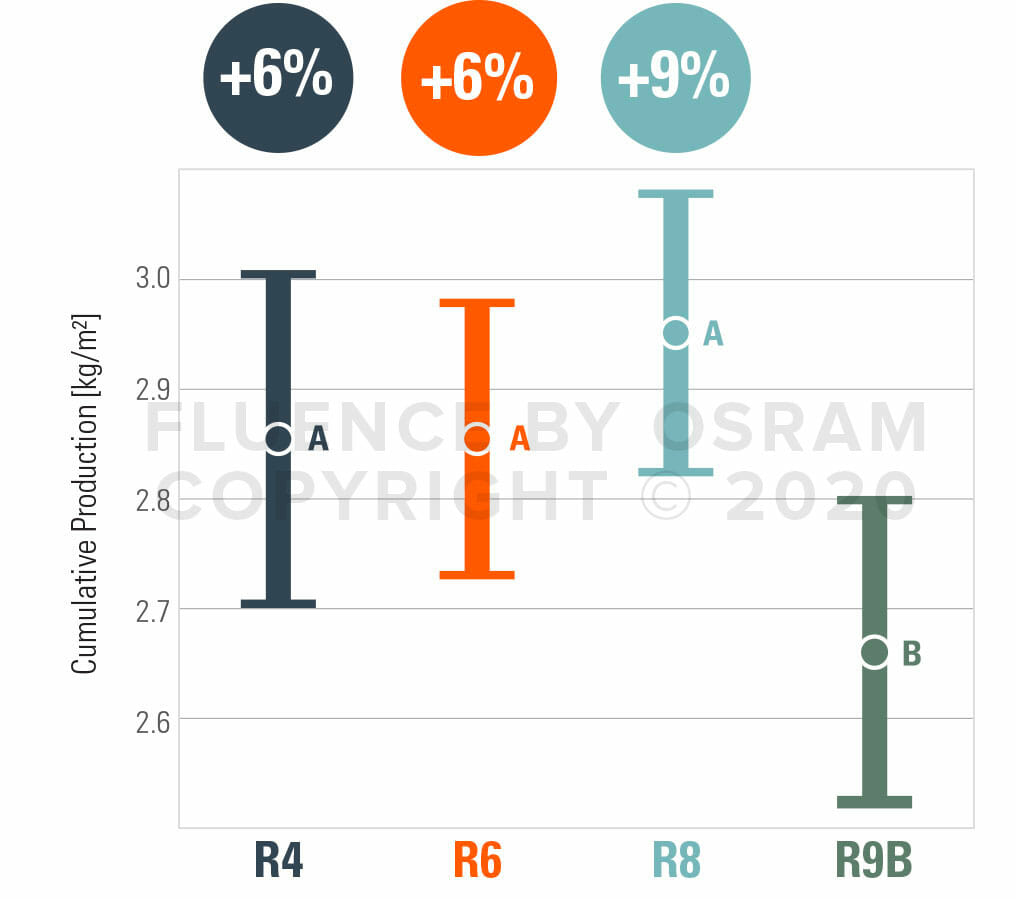
Plant Morphology
When analyzing morphology, researchers identified an up to 10% reduction in plant stem length under the R4 treatment. A linear trend was noted here: The less red added to the spectra, the shorter the internodal spacing.

Fruit Development Time
Here, the results show cucumbers under broad R8 and R6 develop 4 to 5% faster than under R9B.
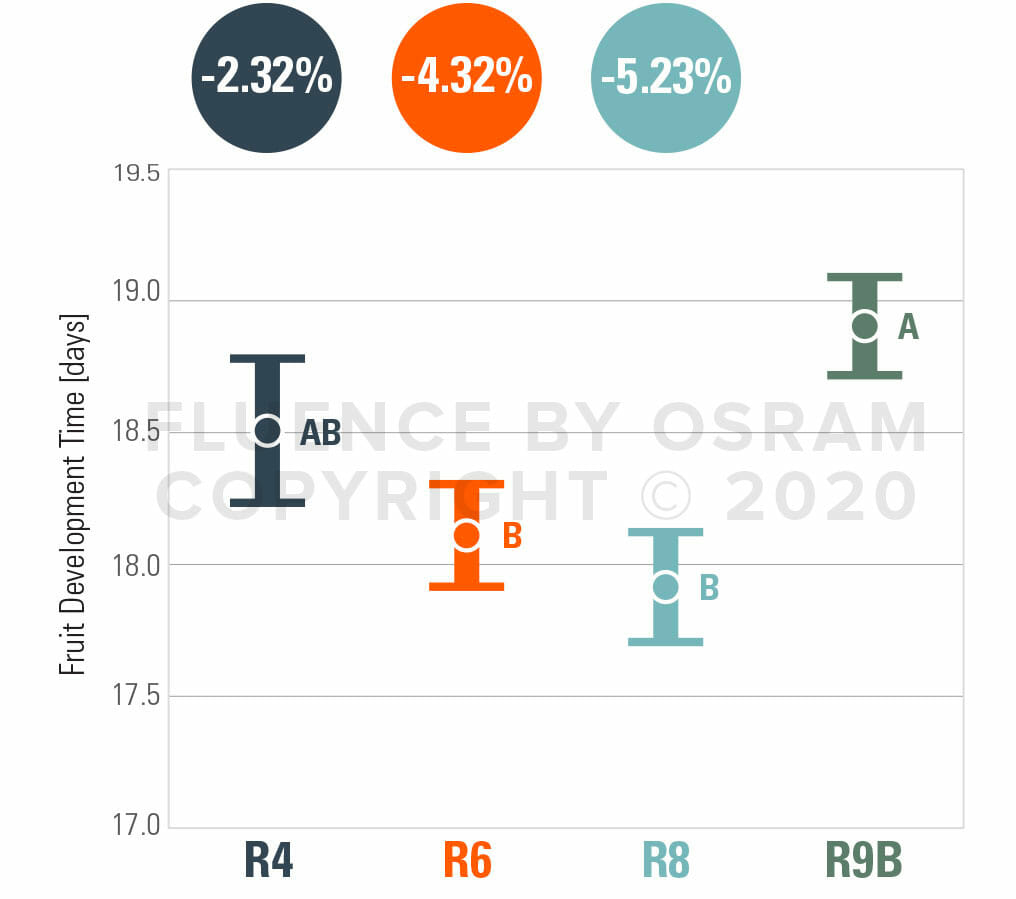
Key Takeaways: Broad spectra is best for higher fruit yield, shorter stem lengths and faster fruit development.
The highest performing results were observed under the treatments with a broad spectrum of light. Trends noted when compared to narrow-band blue-red light include:
9% increase in fruit yield
6% increase in fruit weight
5% faster fruit development
10% Reduction in stem length
A 10% reduction in stem length could lead to a reduction in labor up to 2 to 3 times per cycle, per hectare. Depending on the scale of production, this translates to 60,000 to 90,000 total stem lowering in a single crop cycle. This means reduced labor, fewer touches to the crop, and an overall reduction in the chances of crop damage or contamination.
It was also observed that the differences in fruit yield between spectral treatments became more pronounced as the crop entered the spring months, with plants grown under broad-spectrum treatments yielding higher week-over-week than Dual R9B-grown plants (data not shown).
The apparent trend of yield differences between spectra becoming more pronounced in the spring months warrants further exploration, and the Fluence research team will be digging deeper into this phenomenon to ultimately help growers choose the right light that realizes the greatest possible yields, all year long.
How to choose the right light for your environment
In this study, Fluence and Proefstation applied four spectra, each found to have unique impacts on the crop. Accordingly, when choosing the ideal spectra for your crop growers should connect with Fluence and, together, weight the following factors:
-
-
- Spectral impact on the plant (yield/morphology/quality)
- Light efficacy
- Color rendering index of the light (eye vision)
-
With the VYPR top light solution, efficacy increases depending on the selected spectra. Although narrow band has the highest efficacy, it is not the optimal spectra for the human working condition. For growers concerned about labor conditions and the impact of light on not only plants, but on people, Fluence broad spectra offerings address not only plant production but also human working conditions.
Learn more
For a more in depth look into the results, please connect with the Fluence Horticulture Services Team below.
Future Research
The Fluence and Proefstation trial was conducted during the winter months between 2019 and 2020, an important factor in understanding how light improves plant yield and quality amidst the harshest conditions. The trial’s results indicate a strong entrance for cucumber production in spring and summer months. Future research will analyze the perceived benefit of applying supplemental lighting in the winter months to determine if a broad-spectra lighting strategy provides similar value during spring,summer, and fall high-wire cucumber crop production.
The Fluence research team conducts global trials through partnerships with leading researchers in greenhouse crop production throughout the world while also conducting research in-house at the company’s Photobiology and Research Lab in Austin, Texas. Fluence partners with industry consultants to advise on the commercial viability of the team’s research trials while concurrently proving our lighting solutions at commercial scale through grower case studies led by Fluence’s horticultural services team.
To learn more about this trial or to get in touch with Fluence, contact us here.
About the Research Partner

More than 50 years of experience (°1963)
Located at Sint- Katelijne -Waver
Cultivate under modern greenhouses
“We are the bridge between the growers and scientific research. We apply our knowledge to the practical application of commercial crop production. It is our mission to advance our community and guide them to grow smarter ultimately to be more profitable…”
– Jonas De Win, lead researcher at Proefstation.



